
Shrubs Around Las Vegas, Vegetation Around Las Vegas
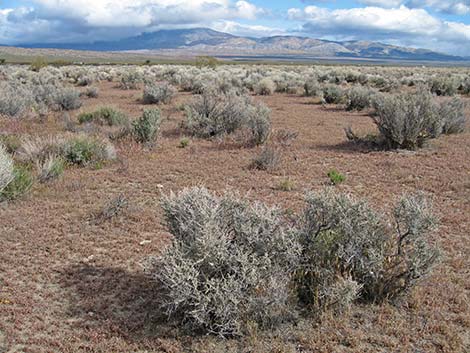 |
General: Cattle Saltbush (Atriplex polycarpa) is a shaggy, rounded shrub with many thin branches and short, fleshy gray-green leaves that are densely white-scaly. The leaves usually are very small, but sometimes leaves grow to 3/4-inches long; these longer leaves are widest towards the tips. Plants are male or female (dioecious). The flowerheads are obvious, but the flowers are small and inconspicuous. Fruits have small wings. Cattle Saltbush is a locally common or dominant component of shrub communities on alkaline flats and dry lake beds with saline soils in the Upper Sonoran (Mojave Desert Scrub) life zone. Family: Amaranthaceae. Formerly Goosefoot (Chenopodiaceae). |
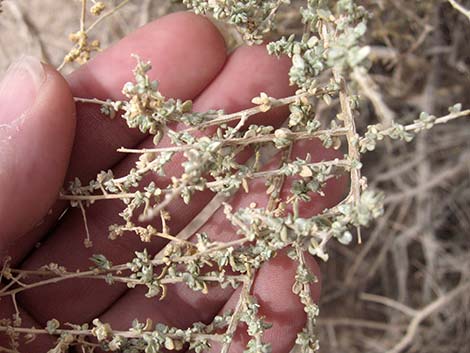 Many thin, intricately branched stems |
Other Names: Allscale Saltbush, Desert Saltbush, Alkali Saltbush, Cattle Spinach. Plant Form: Intricately branched, rounded shrub. Height: Usually to about 3-feet high, but can get to 6-ft tall. Bark: The branches are gray to yellowish-brown with bark that sheds in long strips. Stems: Erect; many thin branches, ascending and spreading. Twigs are slender and become spine-like with age. Leaves: Little or no petiole, leaf blade usually very short (3 mm), but some grow to 5-mm long. Blades oblong (length less than 5 time width), widest towards the tip, somewhat thickened. Mature leaves have epidermal trichomes (hairlike epidermal outgrowths) that concentrate and exude salts, and on saline sites leaves become covered with a salty covering or scurf. |
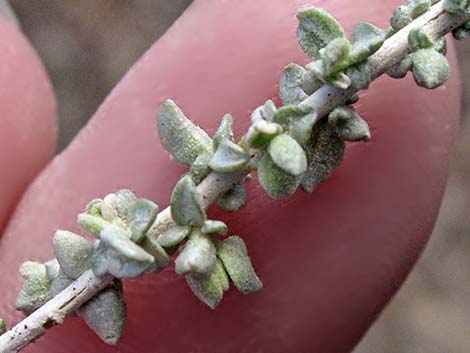 Jumbles of tiny leaves |
Flowers: Male and female flowers are borne on separate plants. Staminate flowers are borne in the leaf axils or on terminal spikes as dense, 2- to 3-mm-wide spikes. Pistillate flowers crowd along the divergent branches in diffuse flower clusters forming 5- to 40-cm-long panicles. individual flowers small and inconspicuous. Fruit bracts small (2–6 mm) and not leaf-like. Seeds: The seed are pale brown and 1–1.5 mm long, enclosed in two papery bracts. Habitat: Dry, poorly to well-drained sandy, gravelly, alkaline, and saline soils in alkali sinks, flats, and occasionally on rocky or gravelly slopes. Elevation: below about 3,000 feet. Distribution: San Joaquin Valley (of California) and California deserts to Utah, Arizona, and Baja California, northern-most Mexico. Comments: Provides good quality forage for deer and domestic livestock. |
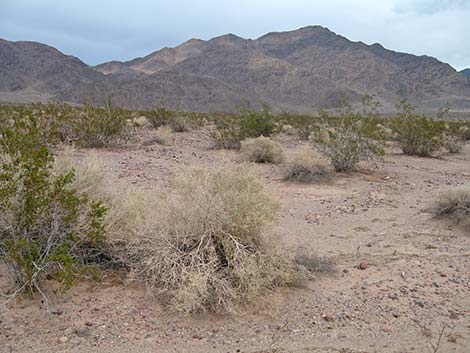 |
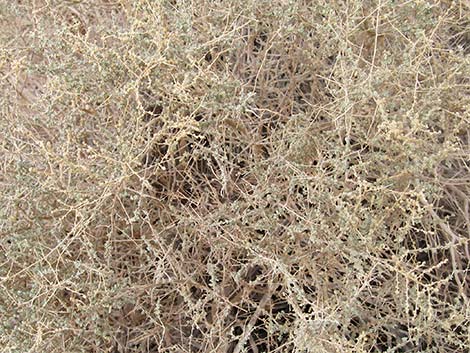 |
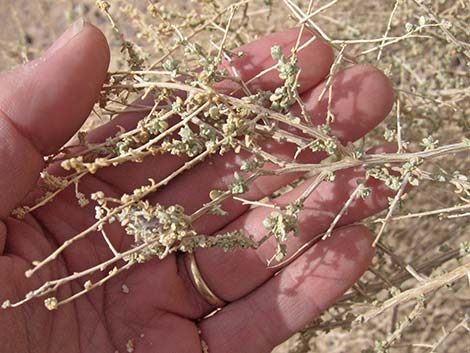 |
 |
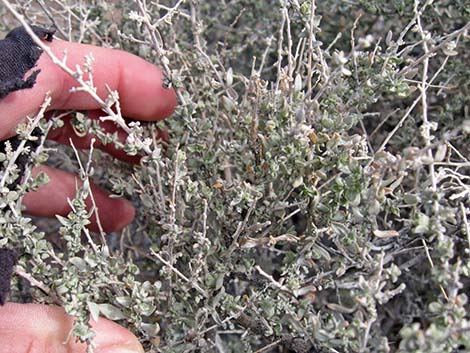 |
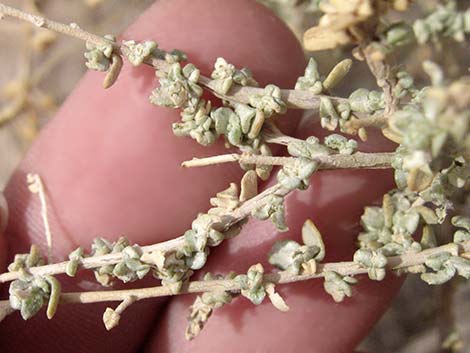 |
 |
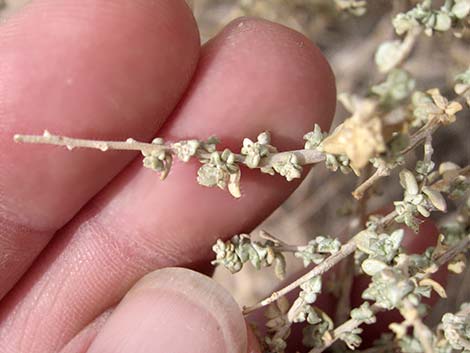 |
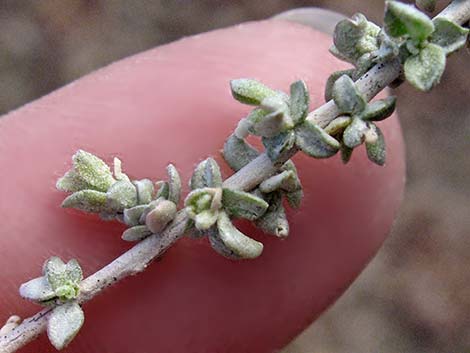 |
 |
Note: All distances, elevations, and other facts are approximate. Names generally follow the USDA database.
![]() ; Last updated 240727
; Last updated 240727
| All Shrubs | Plant Species Index | Glossary | Copyright, Conditions, Disclaimer | Home |